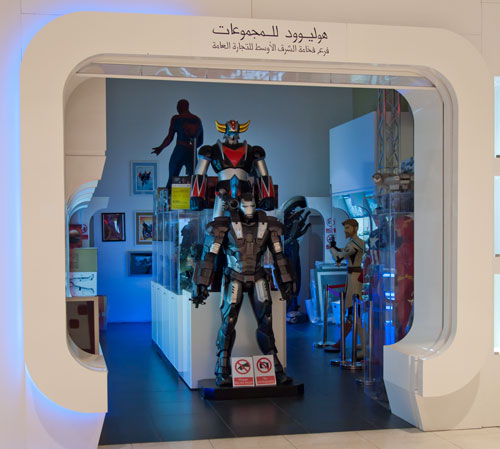AKIRA Again
As I previously posted about, I recently had the opportunity to watch AKIRA—subtitled, no less—on the big screen at my local theater-bar.
AKIRA was the first anime I watched knowing that it was something other than just a cartoon (unlike childhood favorites Robotech and Voltron), and since I’ve seen it several times already, I took this opportunity to, for the first time, really take in the experience of watching it. Â To look closely instead of reading the subtitles, try to pay attention and absorb the experience instead of just that auto-pilot feeling you get when you’re re-watching something familiar.
Having done so, I took away a few things:
One, AKIRA is every bit the narrative mess I remember it being. Honestly, if you didn’t know that there was a bunch of manga that wasn’t making it to the screen it has about as vague, unsatisfying, and pseudo-philosophical ’80s-anime-ish of an ending as anything other than Birth (aka Planet Busters—remember that one?). I didn’t think all that much of the plot twenty years ago when I first saw it, and I still don’t.
Two, man is that a disturbing film—the visceral, nightmarish imagery is really something, and at least for me seems to tap into some vague memory of childhood fever dreams that is unsettling on a deep level. Even early on, some of the stuff is impressive, and of course the Tetsuo-blob finale with fingers-of-fingers grabbing at people is more horrific in its own way than just about any horror movie. (Aside: ran across a hilarious reference to that in a webcomic archive recently.)
Three, they sure don’t make them like that anymore. Even with big-budget spectacles like Ghibli’s works, I’m not sure any anime I can think of has quite the level of massive, fully-animated, no-computer-assist crowd scenes and fluid, always-moving character animation. It does with crowds of artists what more modern movies use extensive computer-assisted or -generated art to do, and the level of detail and depth of animation really does feel somehow different from almost anything else out of Japan. Reminds me far more of classic Disney spectacles than anything, or in some parts Ralph Bakshi’s rotoscoped animation style. I actually don’t much like the character animation style (a little too… soft for my taste—I prefer precision and sharp movements), and of course being from Otomo everybody shares about three faces, but the more closely you look at it, the more impressive and visually unique you realize it is.
Four, Otomo certainly has a feel for angry, disillusioned youth and that rowdy punk energy with nowhere to go but pointless malice. Sure, Japan has bousouzoku biker gangs, but for a guy from one of the most peaceful and conformist countries on earth, he’s remarkably good at tapping into youthful rage and hatred of authority; he does the same thing with a healthy outlet in Freedom Project, but AKIRA goes all-in and really sells it. On both a large scale—the main character and antagonist—and in the broader scenes of social unrest. He also of course works in the military guy doing the coup as something of a counterpoint, which makes the whole thing less bluntly anti-authoritarian and more grey.
And, finally: Mitsuo Iwata?! It had been long enough since I’d seen AKIRA in Japanese that my ear for the language has improved substantially, so this was the first time I was really listening to the actors. And about a quarter of the way in, I found myself thinking that Kaneda sounded an awful lot like a young Mitsuo Iwata… but that couldn’t possibly be the lovable goofy-guy specialist playing the quintessential angry, angsty street punk. But my ears did not deceive me, and I don’t think I’ll be able to watch Adventures of the Mini Goddess with quite the same viewpoint again.
Anyway, it’s almost always fun and sometimes enlightening to go back and watch something familiar with a really open mind, and try to absorb it more fully than you would during a normal re-watch. I did that back when the original Star Wars trilogy was re-released in theaters, and I wasn’t disappointed when I applied the same mindset to AKIRA.
(Unrelated aside: I’ve vacillated back and forth between writing it “Akira” and “AKIRA,” both of which I’ve seen used. Given that the title is a very common given name, but is written in phonetic Katakana as if it were a foreign word, I’ve gone with it being intended to appear like an acronym, hence my use of all-caps.)

